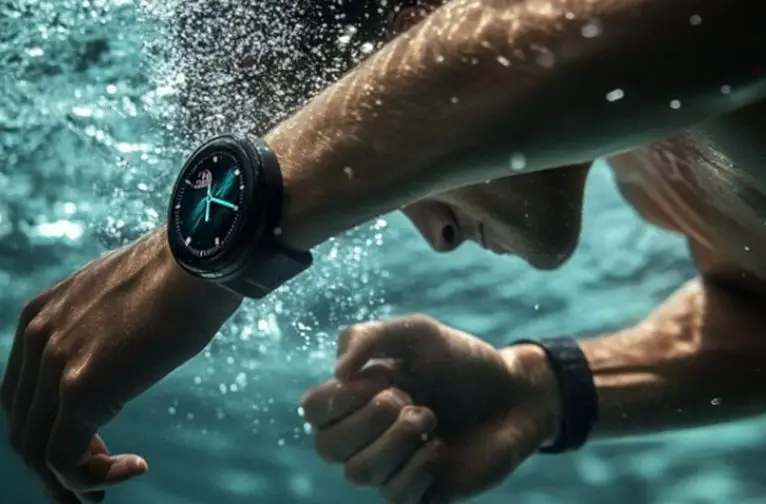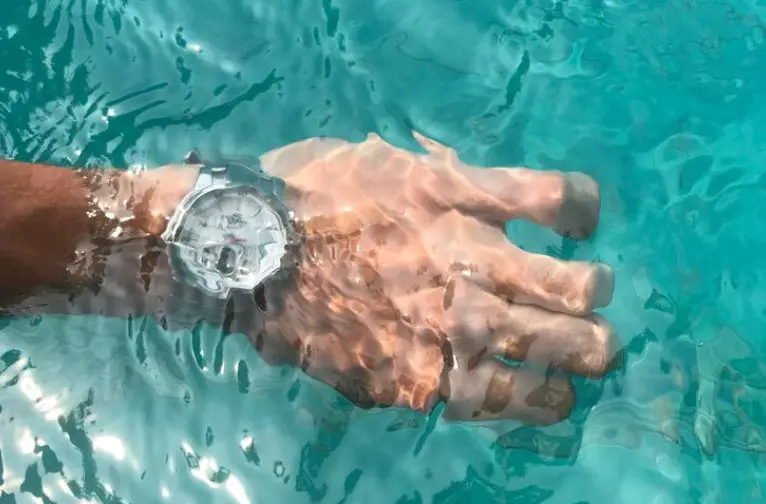Learn what water resistance in watches means. Understand ratings, care tips, and how to choose the right watch for swimming, diving, or everyday use. Stay informed and protect your timepiece.
Water resistance in watches is a key feature every man should understand to protect his investment and enjoy reliable performance.
Whether you’re caught in the rain, washing your hands, or taking a swim, knowing how much water exposure your watch can handle is crucial.
Many men mistakenly believe that water resistance means their watch is waterproof under all conditions, but the reality is more nuanced.
Different water resistance ratings correspond to specific limits and uses, from everyday splashes to deep-sea diving.
This guide breaks down the meaning behind those numbers, clarifies common misconceptions, and offers practical tips to help you choose and care for a watch that suits your lifestyle.
Stay informed and make sure your timepiece stays as tough and dependable as you are, no matter where life takes you.
Related: Guide to Men’s Fashion Accessories
Table of Contents
- What Does Water Resistance Mean?
- Common Water Resistance Ratings and Their Uses
- How Water Resistance Works in Watches
- Factors That Affect Water Resistance Over Time
- How to Maintain and Test Water Resistance
- Choosing the Right Water Resistance Level for Your Lifestyle
- Common Myths About Water Resistance in Watches
- Frequently Asked Questions
- Conclusion
What Does Water Resistance Mean?
Water resistance in watches means the watch is designed to resist water entry to a certain extent, based on pressure tests that simulate specific depths.
However, these ratings indicate laboratory conditions, not everyday water exposure.
Factors like temperature changes, aging seals, and movements affect actual resistance. Knowing what the ratings mean helps you protect your watch and use it safely.
Water Resistance Ratings Explained
Water resistance in watches is shown in atmospheres (ATM), meters, or bars, which tell you how much pressure your watch can handle.
One ATM equals about 10 meters of water pressure or one bar. So, a 5 ATM watch can handle pressure like being 50 meters underwater.
But keep in mind, these tests happen in labs without movement or temperature changes.
When you swim or dive, these factors matter. Understanding these ratings helps you pick a watch that fits your daily activities and protects your timepiece from damage.
Water-Resistant vs. Waterproof
No watch is completely waterproof. That word suggests it can stay safe in water forever, which isn’t true.
Water-resistant watches block water based on their build and rating, but don’t stop water in all situations.
Over time, seals can wear out or get damaged. If you treat your watch like it’s waterproof, you might end up with a broken watch.
Knowing the difference helps you avoid mistakes and keeps your watch safe in the right settings.
Related: What to Wear a Men’s Casual Watch With
Common Water Resistance Ratings and Their Uses

Knowing your watch’s water resistance rating helps you understand what it can handle without damage.
Each rating matches certain activities, from light splashes to deep diving.
Picking the right level makes sure your watch fits your lifestyle and stays safe during daily use or water sports.
3 ATM: 30 Meters Splash Resistant for Everyday Use
A watch with a 3 ATM or 30 meters rating can handle light water contact like rain, handwashing, or splashes.
It’s fine for daily wear when you don’t expect full water exposure. This rating protects your watch during casual activities, but don’t wear it swimming or in the shower.
If your water exposure is minimal, this level offers basic protection without worry.
5 ATM: 50 Meters Suitable for Swimming
A 5 ATM or 50 meters rating means your watch can handle brief submersion, like swimming in shallow water or showering.
It suits men who enjoy swimming or water play without deep diving. Avoid long or rough water exposure because it can still affect the seals.
This rating gives moderate protection for common water activities without risking damage.
10 ATM: 100 Meters Suitable for Snorkeling
At 10 ATM or 100 meters, your watch can handle more pressure and is good for snorkeling or surface water sports.
It fits men who swim regularly or take part in water activities near the surface.
This rating protects against moderate water pressure but isn’t meant for deep diving, where pressure rises quickly.
20 ATM: 200 Meters and Above Suitable for Diving
Watches rated 20 ATM or 200 meters plus are built for diving and strong water pressure.
These dive watches offer tough cases and seals made to handle long submersion and intense pressure.
If you dive frequently, whether scuba or free diving, this rating keeps your watch safe and working well in deep water conditions.
Related Posts
- Guide to Men’s Watches: Styles, Movements and More
- Best Men’s Watches: Luxury, Affordable, Smart and Dress Timepieces
- Men’s Dress Watch Guide: How to Choose and Wear the Perfect Timepiece
- Ultimate Guide to Pocket Watches
- Men’s Watches Under $100 – Affordable Timepieces That Look Expensive
- Guide to Luxury Men’s Watches
- Watch Movements Explained
How Water Resistance Works in Watches
Water resistance depends on smart design and materials that keep water out of your watch’s case.
Knowing how these parts work helps you understand why your watch needs care and occasional maintenance to stay protected.
Role of Seals, Gaskets, and Case Design
Seals and gaskets made from rubber or silicone block water at weak points like the crown, crystal, and case back.
They create a tight barrier to stop moisture from entering. The watch case also matters; thicker cases and strong builds handle pressure better.
Good materials and precise assembly make sure all parts work together to keep your watch dry and safe.
Importance of Proper Crown and Case Back Locking
The crown and case back are common spots for water entry. Watches with screw-down crowns and backs lock these points securely.
If you forget to tighten the crown or case back, water can seep in and damage the watch.
Always check that these parts are locked before going near water to keep your watch safe and working right.
Factors That Affect Water Resistance Over Time

Water resistance in your watch changes as it ages and faces everyday use. Knowing what causes this helps you protect your watch and keep it working longer.
Aging of Seals and Gaskets
Seals and gaskets wear down from moisture, heat, sweat, and chemicals like chlorine.
Over time, they lose their tight fit and let water slip inside.
Replacing these parts during regular maintenance keeps your watch sealed and water-resistant.
Impact of Shocks and Temperature Changes
Dropping your watch or sudden impacts can damage seals and let water in.
Moving quickly between hot and cold environments makes materials expand or shrink, which weakens the seals.
Avoid shocks and quick temperature changes to keep your watch safe.
Effects of Improper Handling
Using the crown or buttons underwater can break the seal and let water inside. Not rinsing off saltwater after swimming can cause corrosion that damages seals.
Handle your watch carefully and clean it after exposure to salt or chemicals to protect its water resistance.
How to Maintain and Test Water Resistance
Gentlemen, keeping your watch water-resistant means regular care and professional checks.
This helps your timepiece stay reliable whether you’re at the office or near water.
When to Get Professional Pressure Testing
Pressure testing mimics water pressure to confirm your watch’s resistance.
Men should get this test every one to two years, especially if you dive or your watch has taken a hit.
After battery changes or repairs, testing ensures the seals hold tight, protecting your investment.
Recommended Maintenance Intervals
Manufacturers advise servicing water-resistant watches every three to five years. During service, technicians replace gaskets, check seals, and test resistance.
If your lifestyle includes frequent water exposure, more regular maintenance keeps your watch ready for action.
Tips to Protect Water Resistance in Daily Wear
Rinse your watch after saltwater or chemical exposure and avoid using the crown underwater.
Store it in a cool, dry place. Always check that screw-down crowns and case backs are secure, and steer clear of sudden temperature changes to keep seals strong.
Choosing the Right Water Resistance Level for Your Lifestyle
Gentlemen, picking the right water resistance depends on how you use your watch.
Matching the rating to your daily activities helps protect your timepiece and keeps it working longer.
Matching Watch Specs with Activities
If your day mostly involves office work or light water contact, a 3 ATM watch fits well. For men who swim now and then, a 5 ATM rating works better.
Snorkeling calls for 10 ATM, while diving needs 20 ATM or more to withstand deep water pressure.
Think about your routine and hobbies when choosing your watch.
Why Overestimating Water Resistance Can Cause Damage
Believing your watch can do more than its rating leads to trouble. A 3 ATM watch might fail in a pool, and a 10 ATM watch won’t survive deep dives.
Overestimating water resistance lets water inside, damaging the movement and leading to expensive repairs. Stay within your watch’s limits to keep it safe.
Common Myths About Water Resistance in Watches
Many men get water resistance wrong, which leads to damage. Clearing up myths helps you protect your watch and make smarter choices.
The “All Watches Are Waterproof” Myth
No watch is fully waterproof. Even top dive watches have limits and lose water resistance over time.
Thinking your watch can handle any water puts it at risk. Treat every watch as water resistant to a certain degree, not waterproof.
Misunderstanding Water Resistance Ratings and Real Use
Water resistance ratings like 30 meters don’t mean you can dive that deep. They reflect pressure in a lab, not real water activity.
A 30-meter rating covers splashes and rain but not swimming or diving. For diving, you need 200 meters or more.
Knowing this keeps your watch safe and working.
Frequently Asked Questions
What does water resistance mean in watches?
Water resistance means a watch can resist water entry up to a specific pressure, tested under controlled lab conditions, not for everyday use.
How often should men get their watches pressure tested?
Gentlemen should have their watches pressure tested every one to two years, especially after impacts or battery changes, to ensure seals remain intact.
Can I swim with a 3 ATM water-resistant watch?
No, a 3 ATM watch handles light splashes or rain but is not suitable for swimming or full water submersion.
Why is it important not to overestimate a watch’s water resistance?
Overestimating can cause water damage as watches are rated for specific pressures; exceeding them risks costly repairs and compromised performance.
Conclusion
For the discerning gentleman, understanding water resistance is essential to protect and preserve your valued timepiece.
Water resistance is not a permanent shield but a carefully engineered feature that requires respect, care, and regular maintenance.
Knowing how to interpret ratings, avoid common myths, and match your watch to your lifestyle ensures your watch remains reliable, whether in the boardroom, by the pool, or underwater.
Remember, even the finest watches need professional checks and gentle handling to maintain their protective seals.
By staying informed and proactive, you safeguard your investment and keep your watch as dependable and refined as you are, no matter where life’s adventures take you.
References
- Inside Rolex’s gruelling, top-secret dive watch testing facility
- A MythBusting Guide To Water Resistance | WatchCrunch
Pyo Merez is a men’s lifestyle enthusiast and writer about the gentleman’s place and impact on society. Raised by a distinguished gentleman dad, he offers unique insights into how the mind of a gentleman works and how societal norms shape gentlemen’s identity and vice versa.
Through his insightful articles, Pyo taps into the depths of gentleman culture to provide perspectives on etiquette and manners in modern society.